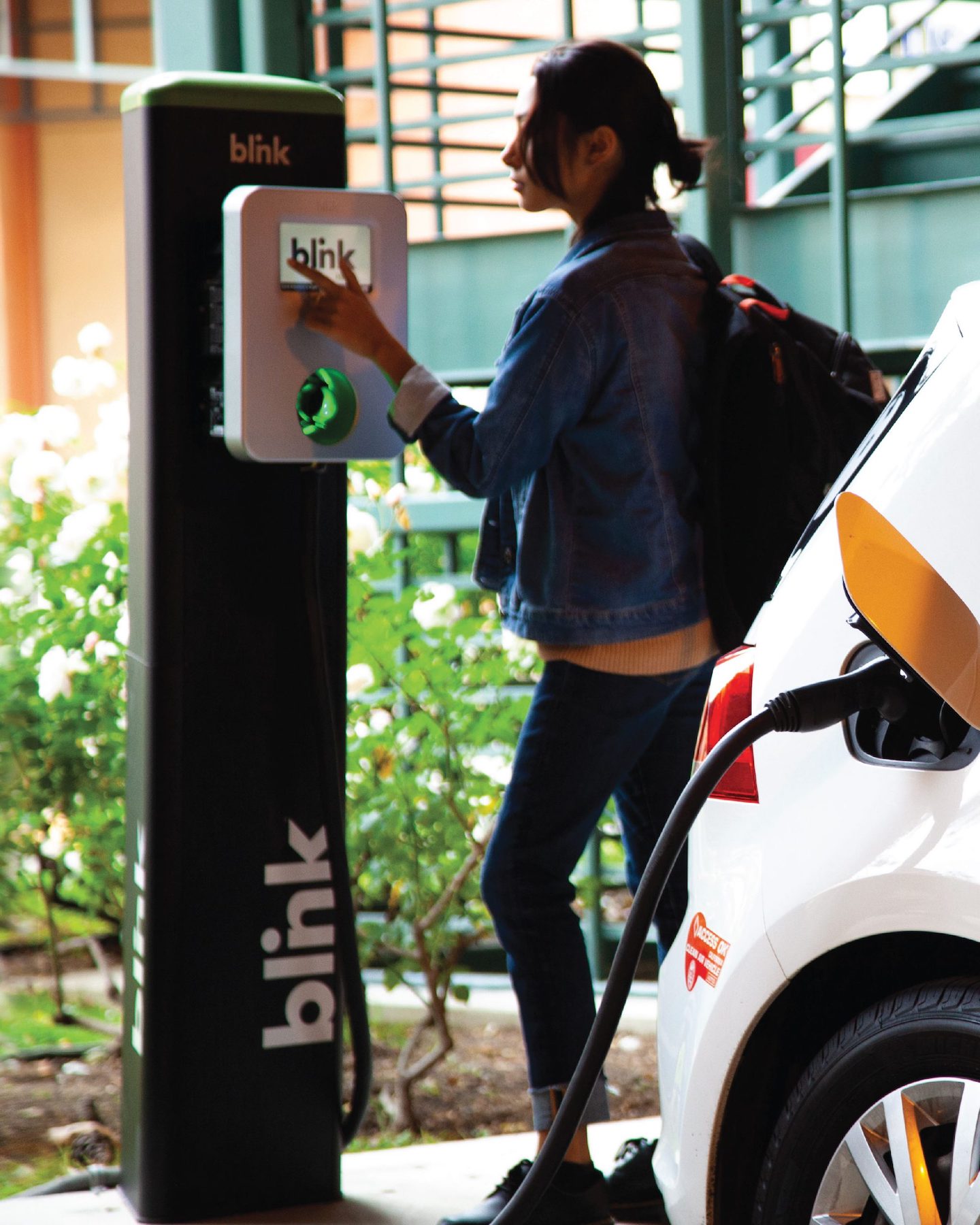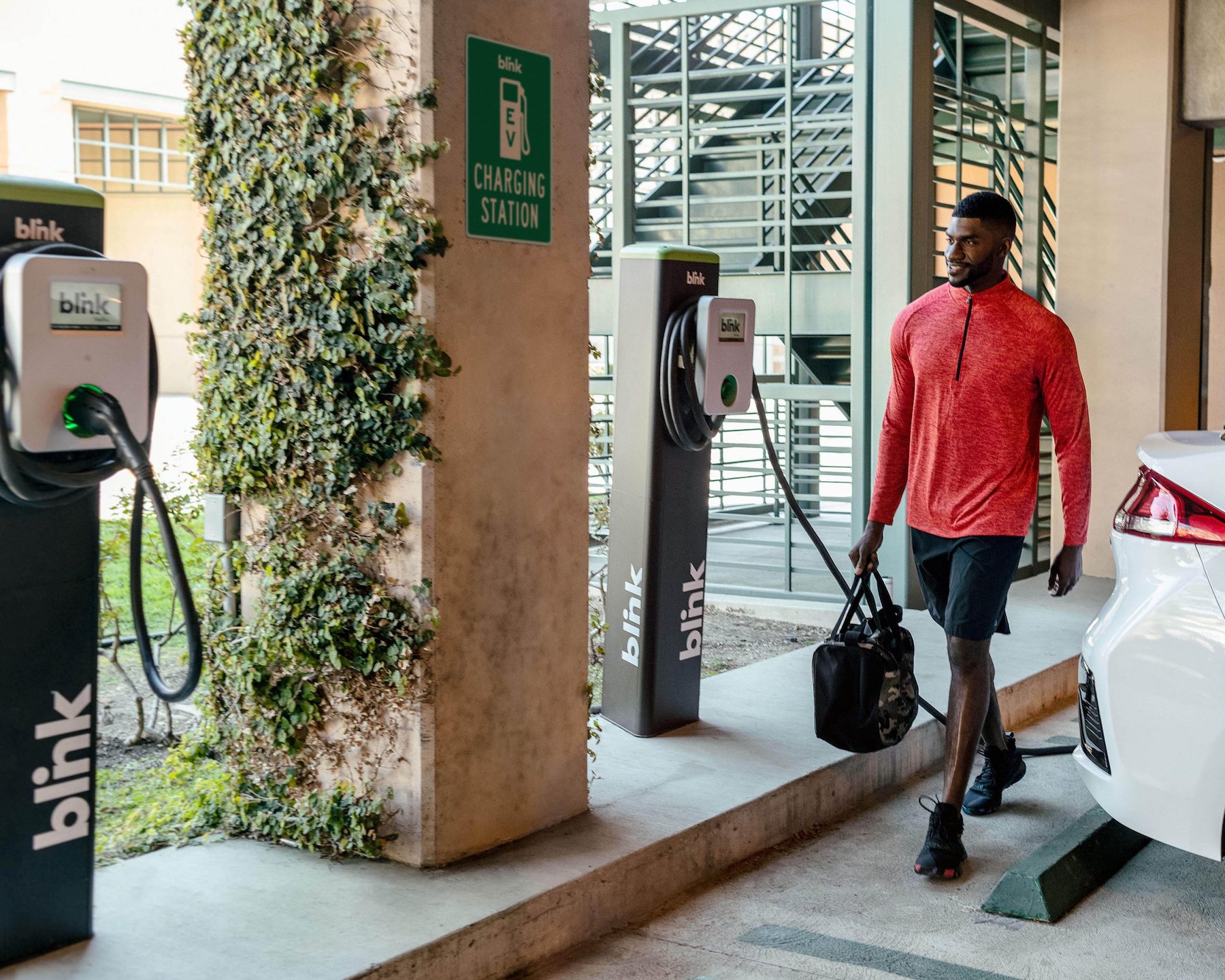Despite the recent decisions by leading automakers, in response to demand shifts, to temporarily slow their production of electric vehicles, the federal government remains committed to the electrification of transportation, and some AEC firms have been exploring avenues to capitalize on this market sector’s expansion.
Through the first half of 2023, sales of electric vehicles in the U.S. rose by 49 percent compared to the same period a year earlier. But that increase compared unfavorably to the 63% gain in calendar year 2022. Carmakers like Ford, General Motors, and Tesla have announced they were curtailing or delaying production of certain EV models during this period of what one sector analyst referred to as “growing pains.”
This market’s perceived uncertainty hasn’t tempered the Biden Administration’s support of electric vehicles as part of its larger strategy to reduce carbon emissions. The White House foresees a national network of 500,000 EV chargers nationwide, in anticipation that electric vehicle sales will rise to at least half of all new car purchases by 2030. Year-to-date EV sales through September reached just over 873,000 and were on track this month to surpass 1 million units for a year for the first time ever.
Some AEC firms are jumping on this bandwagon proactively.
Full service charging stations, in design and construction
The engineering firm Kimley-Horn recently launched TREDLite EV, a software solution for retail chains and local governments to select the best locations for their new EV chargers. Kimley-Horn also partnered with Drive Electric Tennessee, an awareness and implementation program that in September released its “Multifamily Electric Vehicle Charging Infrastructure Guide,” for developers and occupants who wish to install chargers.
Driver SPG, a division of the general contractor C.W. Driver Companies, is building what will be the first full-service electric vehicle charging station for Rove Charging, which plans to open 20 locations by 2026. The first station, on 1.2 acres in Santa Ana, Calif., is slated to open next summer. Designed by Peruzzi Architects, the station will be able to recharge 40 vehicles simultaneously via high-powered fast chargers. The station will include an on-site market operated by Gelson’s Markets, restrooms, and free Wi-Fi for customers who use the station’s lounge and outdoor patio. Some Rove stations will offer a car wash.

The Santa Ana station will be able to generate renewable energy through on-site solar panels and battery storage that supplements the city’s electric grid.
Last month, The Chicago Athenaeum and The European Center for Architecture Art Design and Urban Studies bestowed its International Architecture Award on The Sunflower Station, an EV station of the future designed by Beijing-based Sanyou Architectural Design and commissioned by the fuel distributor and retailer Parkland Corporation, which is based in oil-rich Calgary, Alberta, and has operations in 25 countries. This station design—which reimagines a typical highway gas station as a recharging oasis—has 24 EV charging spaces, and other areas where drivers and passengers can rest, watch movies, or meditate. The design also featues solar panels and a rainwater collection system.
Recharging everywhere
The number of EV chargers continues to proliferate. Earlier this month, EVgo, one of the nation’s largest public fast-charging networks, revealed that it would start using a prefabricated approach that cuts the install time for fast chargers in half and reduces construction costs by an average of 15 percent.
EV chargers in general are more likely to be installed in parking lots of shopping centers than within dedicated standalone structures a la gas stations. An EV station concept study that Gensler and BMW Designworks conducted a few years ago has yet to find a willing adopter, confirms a Gensler spokesperson. The developers behind the Stack Charge EV station concept, who previously stated their plans to open 10 stations in Southern California by the end of 2023, now say their first station with 40 fast chargers, in Baker, Calif., between Los Angeles and Las Vegas, will open early next year.
“As the country transitions to electric vehicles, it is moving to a distributed fueling model, where a vehicle can be recharged at the gym, at the supermarket, or on roadways like gas stations,” says Mike Battaglia, COO of Blink Charging, one of the country’s leading EV charging providers, with more than 3,500 charging locations and nearly 12,000 connectors.
He says that Tesla has done a good job expanding its network of supercharging stations, of which it has nearly 2,000 with close to 22,000 supercharger ports, according to Department of Energy estimates. But Battaglia cautions that DC fast charging stations are expensive, which makes calculating the return on investment for such projects dicier.
While Blink also wants a bigger piece of the fast-charger pie, it is targeting the multifamily sector for installation of level 2 charging equipment, whose cost is a fraction of DC fast chargers, and offers higher-rate AC charging through 240-volt electrical service for residential applications, and 208-volt service for commercial applications. Level 2 chargers can charge an EV to 80 percent from empty in four to 10 hours, and a plug-in hybrid in one to two hours, according to the U.S. Department of Transportation estimates.
Citing research by McKinsey and other sources, Battaglia says that, despite all the media hype around fast chargers, 90 percent of all kilowatt hours of electricity dispensed for EV charging will come through level 2 equipment. And more multifamily developers are interested in installing EV chargers as a competitive amenity that meets growing tenant demand.
For multifamily clients, Blink conducts a site assessment to determine the number of stations needed and whether the building has sufficient electrical service. Battaglia says that, on average, a multifamily complex would require one charger per five to seven EVs on site. Level 2 charging equipment costs between $5,000 and $6,000 per unit, and another $8,000 and $20,000 to install.
The biggest driver of cost is the distance separating the building’s electrical panel from its bank of EV chargers. That’s why Blink advises its multifamily clients, when choosing the location for chargers, to plan ahead for the likelihood of increased demand. Blink will soon offer a dual-point charging station that can recharge any electric vehicle including Tesla’s, whose charging standard has been embraced by several carmakers.

Production slowdown an aberration
The publicly owned Blink Charging reported a 151 percent increase in revenue, to $97.9 million, for the nine months ending September 30. The company expects to be earnings-per-share positive by December 2024, says Battaglia.
Blink recently signed a seven-year agreement to become the official EV charging provider for the city of Miami Beach, its headquarters city. Blink is also partnering with the connected car and parking service provider Parkopedia to integrate more than 4,000 EV chargers onto Parkopedia’s platform in North America, giving its subscribers access to Blink’s charger network. Blink’s products are now prioritized by the state of Utah for government, nonprofit, K-12, and higher education agencies. The company is also the EV charging supplier for the Tennessee Valley Authority to provide charging solutions for public and commercial fleet applications.
Blink emphasizes its flexibility. It will be adopting Tesla’s charging standard and incorporating plug-and-charge technology that simplifies the payment process for EV drivers. Blink also provides energy management services.
Battaglia isn’t too worried about slowdowns in EV production, which he sees as a temporary aberration. “Look, electric vehicles are now 7.7 percent of car sales, and were 25 percent [of sales] in California” in the first half of 2023. “We never thought this was going to be a linear rocket ship.”
Related Stories
| Aug 11, 2010
New York Mayor Bloomberg opens nation's first multi-story green industrial facility and announces new green manufacturing plant at Brooklyn Navy Yard
Mayor Michael R. Bloomberg, Deputy Mayor for Economic Development Robert C. Lieber, and Brooklyn Navy Yard Development Corporation Chairman Alan Fishman and President Andrew H. Kimball today opened the Perry Avenue Building, the nation's first multi-story green industrial facility at the Brooklyn Navy Yard. Mayor Bloomberg also announced the creation of Duggal Greenhouse, a 60,000-square-foot LEED Platinum certified facility.
| Aug 11, 2010
ASHRAE introduces building energy label prototype
Most of us know the fuel efficiency of our cars, but what about our buildings? ASHRAE is working to change that, moving one step closer today to introducing its building energy labeling program with release of a prototype label at its 2009 Annual Conference in Louisville, Ky.
| Aug 11, 2010
USGBC considering LEED for Data Centers program
In a blog post this morning on Earth2Tech, Justin Moresco writes that the U.S. Green Building Council is giving strong consideration to developing a version of its LEED green building rating system for data centers.
| Aug 11, 2010
10 tips for mitigating influenza in buildings
Adopting simple, common-sense measures and proper maintenance protocols can help mitigate the spread of influenza in buildings. In addition, there are system upgrades that can be performed to further mitigate risks. Trane Commercial Systems offers 10 tips to consider during the cold and flu season.
| Aug 11, 2010
Jacobs, Holder Construction top BD+C's ranking of the nation's 50 largest industrial building contractors
A ranking of the Top 50 Industrial Contractors based on Building Design+Construction's 2009 Giants 300 survey. For more Giants 300 rankings, visit http://www.BDCnetwork.com/Giants
| Aug 11, 2010
AECOM, Arup, Gensler most active in commercial building design, according to BD+C's Giants 300 report
A ranking of the Top 100 Commercial Design Firms based on Building Design+Construction's 2009 Giants 300 survey. For more Giants 300 rankings, visit http://www.BDCnetwork.com/Giants
| Aug 11, 2010
Turner Building Cost Index dips nearly 4% in second quarter 2009
Turner Construction Company announced that the second quarter 2009 Turner Building Cost Index, which measures nonresidential building construction costs in the U.S., has decreased 3.35% from the first quarter 2009 and is 8.92% lower than its peak in the second quarter of 2008. The Turner Building Cost Index number for second quarter 2009 is 837.
| Aug 11, 2010
AGC unveils comprehensive plan to revive the construction industry
The Associated General Contractors of America unveiled a new plan today designed to revive the nation’s construction industry. The plan, “Build Now for the Future: A Blueprint for Economic Growth,” is designed to reverse predictions that construction activity will continue to shrink through 2010, crippling broader economic growth.







